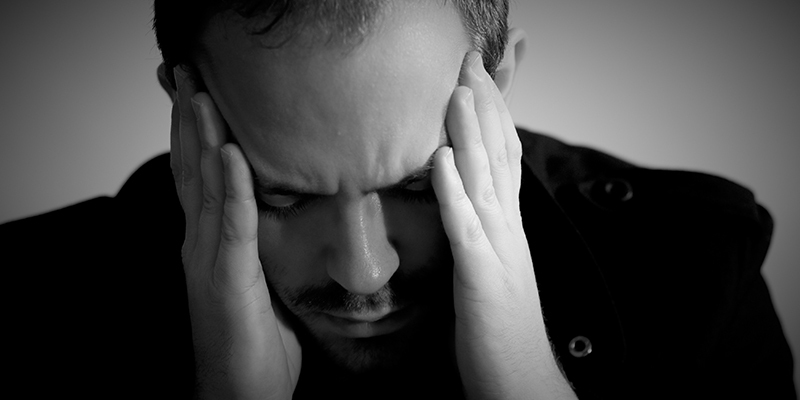
01 Dec How Heroin Affects the Brain
Table of Content
You’ve heard of it. Your friends have heard of it. As quickly as you were first introduced to the concept of drugs came the monster behind the door; heroin. Even its name is tainted by its reputation. But it’s a well-deserved reputation as the drug claims the lives of some 10,000 Americans per year, has proved its incredible staying power, and is absolutely ruthless in its pursuits.
Yet, what is it about heroin that sets it aside from other drugs? Why is heroin the king of opiate related overdoses, and a drug that’s notoriously the most difficult to kick once introduced? What is it about this substance that garners its intimidating, devilish, and hellacious reputation?
To answer these questions we must examine the relationship heroin has with the brain. The way in which heroin manipulates, affects, and changes the brain’s core chemical structure provides reason to its addictiveness and lethalness.
The Current Problem
It might be that you clicked on this article because you or someone you know is struggling with a heroin addiction. Perhaps you want to understand—when heroin is ingested—how exactly it affects the physical body. We all know it induces a high that heroin addicts describe as nothing short of heaven on earth, but outside of its euphoria maybe you want to know what’s going on behind the curtains.
Heroin addiction is a serious problem America currently faces. Currently, there are nearly 1.5 million active heroin users in the US and, sadly, that number continues to grow. While heroin was first introduced to our society in the late 19th century, its popularity has had a rollercoaster evolution.
Being that it was to be a non-addictive, healthier, and more effective alternative to morphine, when it first hit pharmacies addicts flocked to its call. At first it was considered a breakthrough drug. It had the same efficacy as morphine, could curb the ‘itch’ of morphine addicts, and it wasn’t addictive.
America quickly learned that by trying to stop a monster they’d inadvertently let out another, yet this new demon was worse than its predecessor. By the time the US banned the sale of heroin in 1925, deeming it an illegal substance, a core group of addicts had already been formed. That group would set the standard for heroin’s pervasiveness, the reason why we’re still talking about it today.
Still, while heroin has always been a plague to our society, it has also gone in and out of style. Historically the 50s and the 90s were the worst, being that in those decades we witnessed a huge influx in heroin use, one of which that claimed many lives.
The reason this is important is that the third worst decade for heroin in the US is happening right now. America is facing the opioid epidemic, an issue that is claiming lives daily. One of the side effects this epidemic poses is opioid addicts, if they can’t afford or find means to acquire painkillers, will turn to heroin (opioids and heroin come from the same drug family, thus having similar molecular structures and ‘highs’). Thus we are currently seeing an entirely new group of heroin addicts emerge, and it’s a demographic previously untapped by any sort of addiction pitfalls.
The point is: it’s important to educate ourselves on all facets of heroin, as it’s becoming more of a possibility that at one point it may affect you or someone in your life (if it hasn’t already).
Heroin and the Brain
To understand how heroin affects the brain is to first take a look at the brain’s opioid system, a system that’s responsible for managing pain and governing our perception of pleasure. The opioid system consists of three different opioids of endogenous sorts, all of which take an active role in either the administration of pleasure or the mitigation of pain.
Heroin is actually derived from morphine. It does not stand alone. Thus, when heroin first interacts with the body, our natural enzymes rollback its form to morphine before absorbing the drug in its entirety. Morphine is the root opiate but heroin is a somewhat synthetic version (although still not an opioid).
After this conversion occurs, the morphine then attaches itself to certain opiate receptors in the brain’s natural opioid system. The areas in which this can occur is the VTA, Thalamus, Cerebral Cortex, Brainstem, Spinal Cord, and other areas of less importance.
Typically, once these bindings have been made, the reward and pleasure pathways are manipulated. Being that heroin is fast acting and extremely potent, it stimulates these opiate receptors with a vigor otherwise impossible to do naturally.
Pain
Heroin, like morphine, is an effective pain reliever. It does not actually stop the pain, but once it binds itself to the opiate receptors, it can block the ‘pain signals’ from reaching the brain. In this way the pain is ‘forgotten’ due to this miscommunication, rather than cured. Dependent on the amount of heroin used, extreme pain can be dulled completely.
Pleasure
As heroin saturates the mind, the entire method to its addictiveness stems from a neurotransmitter called dopamine. Dopamine is the ‘pleasure’ chemical of the brain. If you are ever rewarded or happy, then dopamine is being released. It is responsible for the way we perceive and experience pleasure.
As you develop in life, certain experiences (like eating tasty ice cream) imprint within your brain, which will then always be linked to your reward center. These are the things that make you happy, like eating your favorite food, being in a certain place, an activity you fancy, or whatever it is that fills you with elation. Every time these things occur, dopamine is released and your brain says, ‘I like this.’
Heroin supercharges your dopamine. It releases it in unnatural amounts, flooding the brain’s reward system with the ‘happy’ chemical. This flooding of dopamine can be 1000x the normal amount, in which case the high is unlike any other as made evident by its effectiveness in brewing addiction. Have you ever heard: if you do heroin once, you’ll be addicted? While that’s not necessarily accurate when considering your brain won’t become physically dependent after only one experience, it is correct, however, if we’re speaking on the excess of dopamine.
Once the dopamine is released, this experience imprints on the reward system. Now the addict draws a link between heroin, and, unfortunately, happiness. It is this link and having experienced such exuberant elation that propels a user to ingest heroin once more.
Overall
In an oversimplification, heroin enters the brain, hijacks the reward and pain pathways, induces extreme elation by stimulating the neurotransmitter dopamine, and relieves pain by binding to certain opioid receptors.
The Damage
If it’s too good to be true, then it probably is. It’s safe to assume you have heard this idiom once or twice in your life. Sadly, the same applies with heroin. While its first introduction is like the most wonderful daydream, escape, and release for its user, the long term use of the drug quite literally works to destroy the brain.
One of the reasons for this is that once heroin binds to the opiate receptors, the brain actually has to create more and more to deal with the influx of heroin. This imbalance is why heroin addicts often chase that ‘initial high’ which called for them to continue usage in the first place. But that first high occurred because of a balanced and healthy opioid system within the brain.
The brain will actually produce more opiate receptors than it needs simply to compensate for the way heroin floods its pathways. With an overabundance of these receptors, it takes more heroin to initiate a comparable high, and eventually a high similar to the initial one becomes impossible.
This relationship between opiate receptors and heroin is what then begets tolerance, which forces an addict to up their dosages and use more frequently. Then full-blown addiction typically follows.
The Prefrontal Cortex and Medial Temporal Lobe
As heroin is continuously introduced to the brain, eventually it begins to directly influence key pieces of the brain’s structure. The prefrontal cortex and medial temporal lobe are areas known for being part of the brain’s thought centers; areas that govern our ability to make decisions, think in higher degrees of complexity, remember things, and strengthen our social intelligence.
In which case, after an extended period of time using heroin, an addict can experience difficulty controlling their behavior, making complex decisions, remembering things in the short-term, anticipating future events, and using reason. This then directly affects their addiction, as their thought process is inhibited, thus diminishing their ability to logically combat the nature of their affliction.
Since their reason and decision-making is impaired, they have a harder time visualizing the future and garnering the mental strength to quit. This is noticed particularly in certain rehab programs, as there are methods of therapy that do not work on heroin addicts because of the thought-process involved.
Goodbye, Happiness
As heroin continuously stimulates dopamine, the brain begins to mistake the drug for the chemical, and can actually stop producing it altogether. This is a phenomenon commonly witnessed with drugs that influence neurotransmitters. In which case, with a depletion of dopamine, heroin addicts can only stimulate their reward system by use of heroin.
When they first began using it was to induce a high which led to a heightened state of happiness, but overtime using becomes about experiencing happiness in general. This means, as the addiction continues, they have a higher propensity to become depressed (often suicidal without their fix), emotionally vacant, distraught, exhausted, volatile, and in a state of despair.
The fix to these problems would be for the brain to begin generating its own dopamine supply as it once did. Sadly, the brain now mistakes heroin for that chemical, in which case the addict is forced to use as a relief for how they’re feeling. This lack of dopamine creates a condition that requires medication, which the addict deems as heroin.
Now heroin is no longer a drug they use for recreation but a necessity to their ‘wellbeing.’
Pain
Being that heroin provides a blanket over pain, with continued use it dramatically lowers the user’s pain tolerance. In which case the signals used to identify pain are amplified. When a user is no longer using, their body becomes hypersensitive to nearly any type of pain.
Pain that would be otherwise nonexistent can call a siren in distress. Former addicts always address how they first felt when trying to quit heroin; one of the reasons that withdrawal is so painful is this exact hypersensitivity. Whispers turn to screams. Any pain brought about by withdrawals (usually linked to the stomach) is nearly unbearable.
While heroin was not initially used as a pain reliever (addicts rarely use heroin again for the intention of reliving pain, they use it to recreate the euphoria induced), now, similar to the aforementioned depletion of dopamine, a problem is created and to the addict, the solution is heroin.
Withdrawals
Heroin is notorious for its hellish withdrawals. There is no drug known to have a worse withdrawal period. Interestingly, with substances like benzos or alcohol, if the addiction is severe enough withdrawals can actually halt the respiratory system and kill the user. Heroin withdrawals cannot.
Yet, the physical and psychological effects of heroin withdrawals are unparalleled when it comes to addiction. To focus on the brain, as heroin hijacks the reward and pain pathways, it is mistaken for an integral chemical the brain needs to function. Without it, chaos ensues.
What first lands is extreme anxiety. As the brain works to balance itself in the wake of heroin absence, it first shifts into hyperdrive. Scrambling to compensate, crippling anxiety ensues.
Emotional volatility follows. Without dopamine, the brain is unable to properly regulate the reward system, in which a maelstrom of depression, fear, and emotional despair emerges. Mood swings can drive the addict to madness as they’re unable to stabilize their chemical structure.
Then insomnia. Due to a rise in activity and the brain having previously relied on heroin’s chemical properties for sedation, during the detox period a user can develop insomnia. Insomnia is heroin’s living nightmare, being that it further amplifies and worsens all of the withdrawal symptoms. Being that the body requires rest to properly heal from heroin addiction, in its absence more problems surface and the existing ones worsen.
Conclusion
The fact is that heroin hijacks the brain. The more it’s used, the more it works to reduce the brain’s functionality. Eventually the brain will treat heroin as its own natural substance and thus, once it’s removed, will go haywire trying to recreate its original structure. Sadly, sometimes it is unable to in which the user must then learn to adapt to their new, less-effective wiring.
This hijacking is what causes users to become full-blown addicts. As more opiate receptors are created, more heroin is needed to bind to them. This phenomenon is what’s ultimately responsible for overdose… and we all know the tragic marriage of heroin and overdose.
If you or someone close to you is struggling with a heroin addiction, know that the drug is relentless, powerful, and life-consuming. The earlier it is caught, addressed, and treated, the higher the chance the addict will make a full recovery and lead a sober, healthier life. You cannot wait with this kind of addiction. You cannot allow it room to gain more control of your brain’s natural structure.
Sources:
“What Effects Does Heroin Have on the Body?” NIDA. 15 Mar. 2019. https://www.drugabuse.gov/publications/research-reports/heroin/how-heroin-used
“Does Heroin Cause Brain Damage?” American Addiction Centers. 15 Mar. 2019. https://americanaddictioncenters.org/heroin-treatment/brain-damage
“Heroin’s Destructive Effects on Vital Organs: Brain, Kidneys and Intestines.” Narconon.org. 15 Mar. 2019. https://www.narconon.org/drug-abuse/heroin/organs.html




 678-771-6411
678-771-6411



No Comments